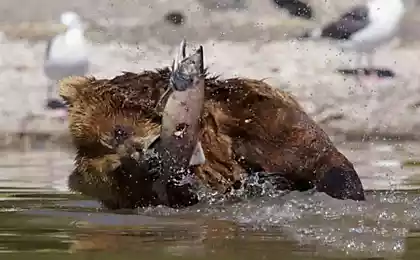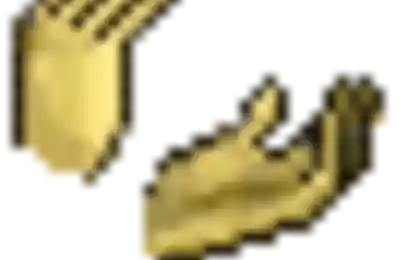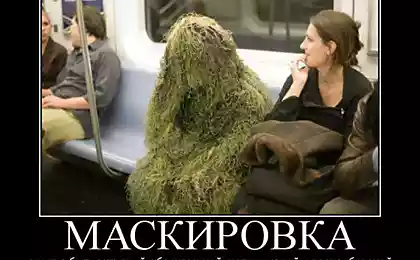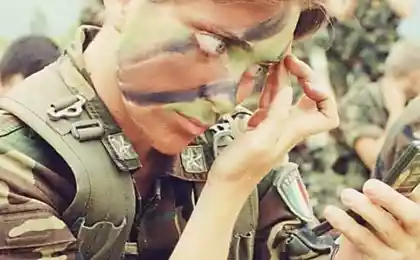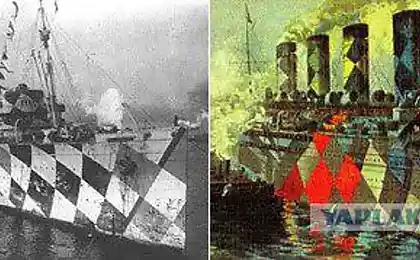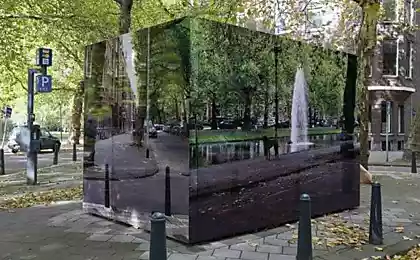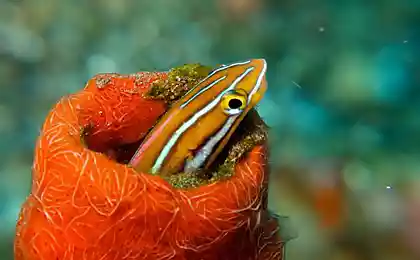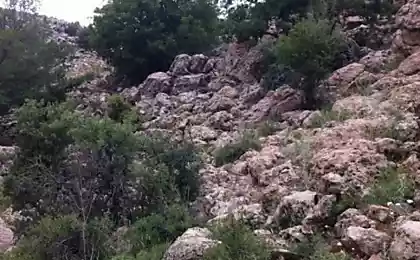1908
Miracles disguise. Part 3 (20 photos)
Continuing the theme of cloaking. Nature creates amazing insects, bugs and tarakashek that adapt to their environment and can merge with it, to protect it from outsiders.

These macro photography taken by photographer Nicky Singapore Bei
Do you think it's a ladybug? No, it's a spider (rear view), it has the same color, like a ladybug, which gives him an excellent opportunity to be masked.
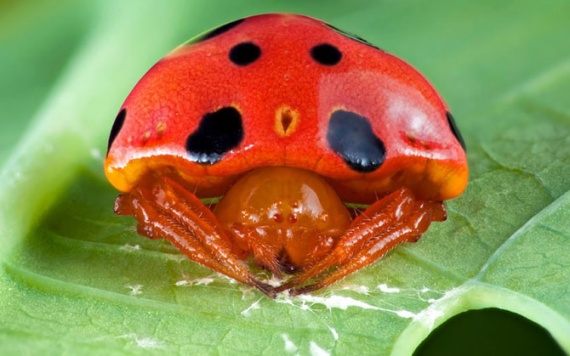
Here is the spider in the front. True cute? This form of mimicry, in which one takes the guise of a harmless form of toxic form, called Batesian mimicry. These ladybugs predators do not like because of their bitterness.
Hemp spider Araneus. This type uses a disguise to look like tree bark ...
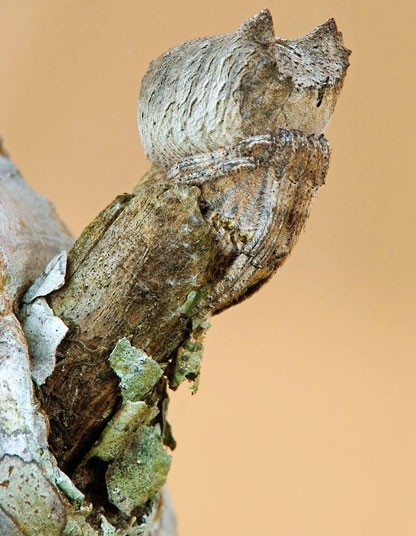
By day he is resting, pressing his paws to the body. Between the legs is visible only to the head. And this high sticking segment - a spider's abdomen.
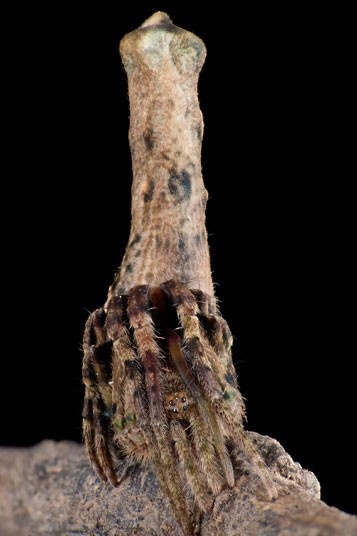
And this beauty - the caterpillar butterfly species nolidov. This species grows big green ball on the abdomen, which comes to a head ...
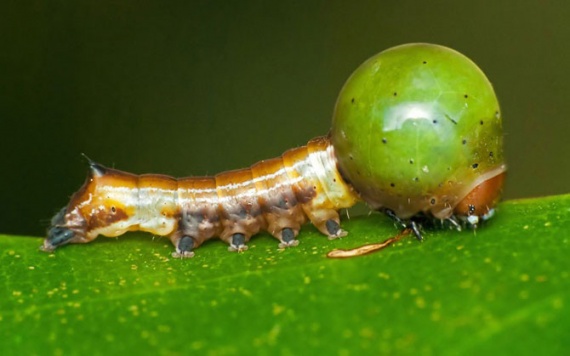
That's how it looks from the front. This should help the caterpillar scare birds, who take her unripe berries.

Spiders kind Miagrammopes have an elongated body, making them look like a twig. These spiders weave a thread and attach it to one side to the twig and the other end to keep for yourself. When an insect lands on a thread, the spider lets go of her and strangles its prey. Spiders of the genus incredibly long arms. In this photo, you can estimate the length of their paws - you can see in the center of the eye? That is all left - paw.
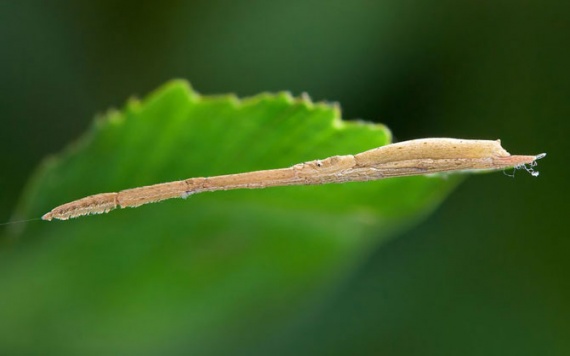
The spider species Phrynarachne. This spider has chosen for itself is not the most pleasant form of camouflage - he was "decimated" by bird droppings ...
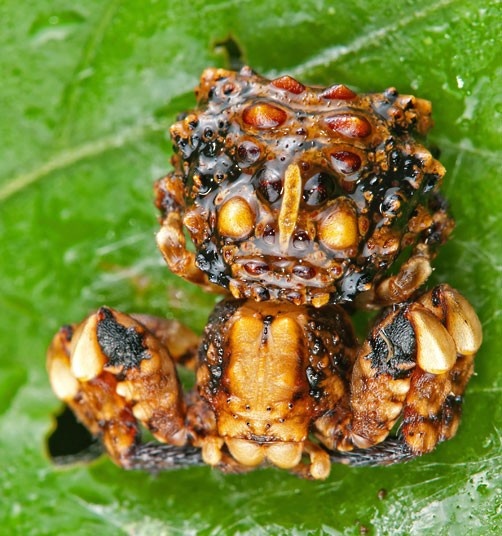
This spider weaves a simple inverted triangle on the leaves and stems of plants. When a spider lands fly from external web breaks through and falls, leaving the victim to hang vertically from the filament. Then the spider approaches the victim to eat it.
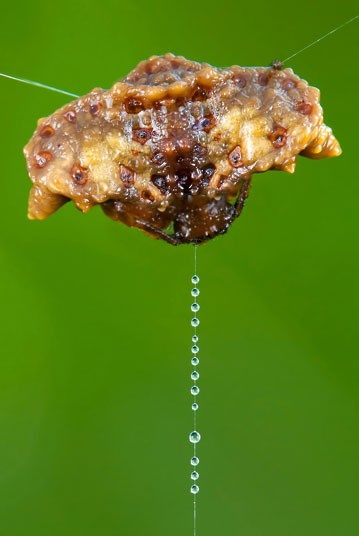
Here it is, this simulator bird droppings near. True honey?

This spider species Gasteracantha arcuata has two very long curved spines protruding from the abdomen. They are believed to scare away predators by mimicking thorns or spines.
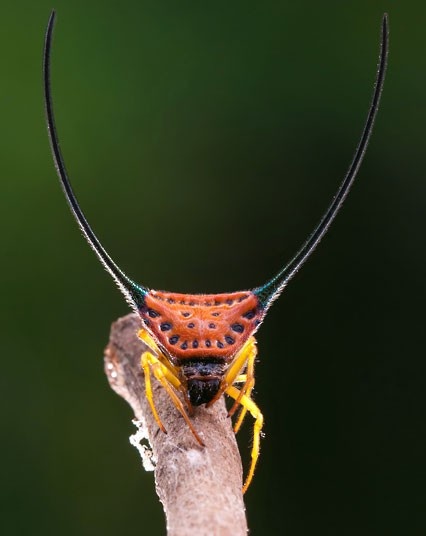
And this is a bug that simulates a ladybird. He has dark spots on the red wings. This color has to scare off predators, which, as we have learned, do not favor ladybirds.

This krasotischa - insect species Reduvius personatus, or in Russian - dirty hischnets. This member of the family of beetles killer pretends to dust and with garbage to hide from predators and to hunt.
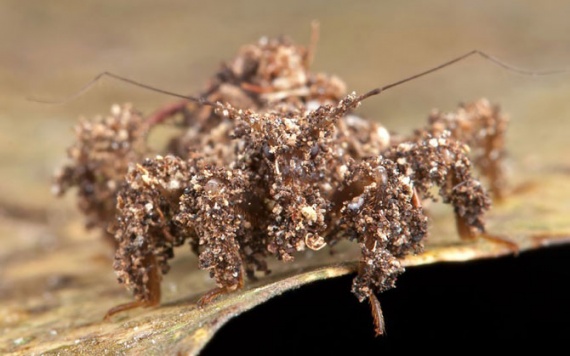
And this kind of lacewings collect on itself fragments, the remains of food and insects, so simple camouflage themselves masters.

Couple gorbatok on a branch. These Gorbatka learned to scare predators by mimicking thorn plants.
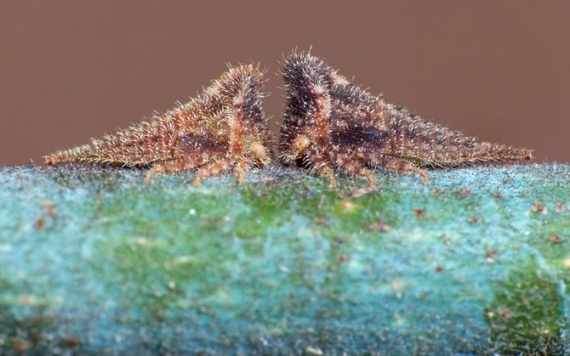
The spider species Cyrtarachne fangchengensis. Happy spiders of this kind have a rest under the leaves. Patterns of their bodies resemble bird droppings, attracting a variety of insects ...
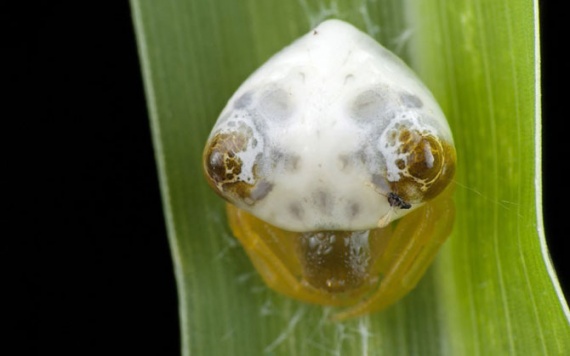
These markings on the body and pulsate, perhaps to warn predators.
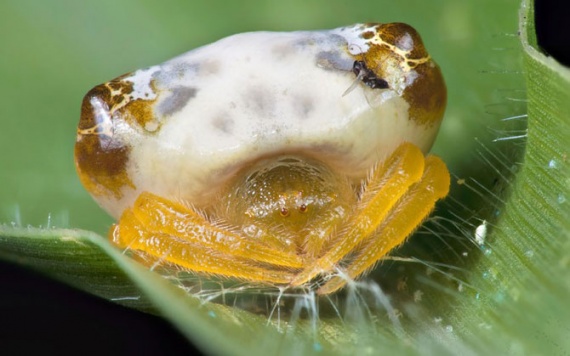
Stick insects, covered with thorns and green, allowing it to perfectly disguise.
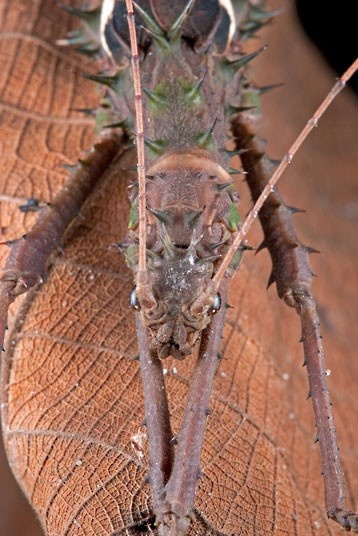
This type of grasshopper like a leaf of a plant.
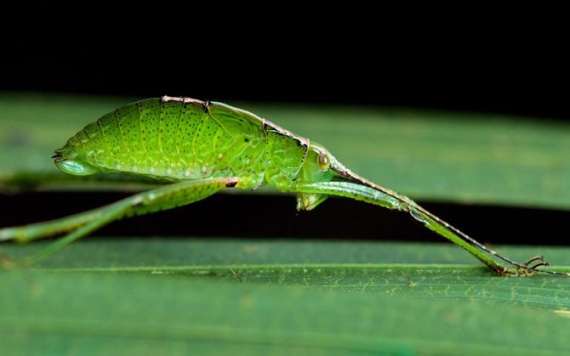
This Nicky Bay, photographer, adapted themselves to distinguish the leaves of grasshoppers, beetles and branches of bird droppings from the spiders.

Source: p-i-f.livejournal.com

These macro photography taken by photographer Nicky Singapore Bei
Do you think it's a ladybug? No, it's a spider (rear view), it has the same color, like a ladybug, which gives him an excellent opportunity to be masked.

Here is the spider in the front. True cute? This form of mimicry, in which one takes the guise of a harmless form of toxic form, called Batesian mimicry. These ladybugs predators do not like because of their bitterness.
Hemp spider Araneus. This type uses a disguise to look like tree bark ...

By day he is resting, pressing his paws to the body. Between the legs is visible only to the head. And this high sticking segment - a spider's abdomen.

And this beauty - the caterpillar butterfly species nolidov. This species grows big green ball on the abdomen, which comes to a head ...

That's how it looks from the front. This should help the caterpillar scare birds, who take her unripe berries.

Spiders kind Miagrammopes have an elongated body, making them look like a twig. These spiders weave a thread and attach it to one side to the twig and the other end to keep for yourself. When an insect lands on a thread, the spider lets go of her and strangles its prey. Spiders of the genus incredibly long arms. In this photo, you can estimate the length of their paws - you can see in the center of the eye? That is all left - paw.

The spider species Phrynarachne. This spider has chosen for itself is not the most pleasant form of camouflage - he was "decimated" by bird droppings ...

This spider weaves a simple inverted triangle on the leaves and stems of plants. When a spider lands fly from external web breaks through and falls, leaving the victim to hang vertically from the filament. Then the spider approaches the victim to eat it.

Here it is, this simulator bird droppings near. True honey?

This spider species Gasteracantha arcuata has two very long curved spines protruding from the abdomen. They are believed to scare away predators by mimicking thorns or spines.

And this is a bug that simulates a ladybird. He has dark spots on the red wings. This color has to scare off predators, which, as we have learned, do not favor ladybirds.

This krasotischa - insect species Reduvius personatus, or in Russian - dirty hischnets. This member of the family of beetles killer pretends to dust and with garbage to hide from predators and to hunt.

And this kind of lacewings collect on itself fragments, the remains of food and insects, so simple camouflage themselves masters.

Couple gorbatok on a branch. These Gorbatka learned to scare predators by mimicking thorn plants.

The spider species Cyrtarachne fangchengensis. Happy spiders of this kind have a rest under the leaves. Patterns of their bodies resemble bird droppings, attracting a variety of insects ...

These markings on the body and pulsate, perhaps to warn predators.

Stick insects, covered with thorns and green, allowing it to perfectly disguise.

This type of grasshopper like a leaf of a plant.

This Nicky Bay, photographer, adapted themselves to distinguish the leaves of grasshoppers, beetles and branches of bird droppings from the spiders.

Source: p-i-f.livejournal.com




